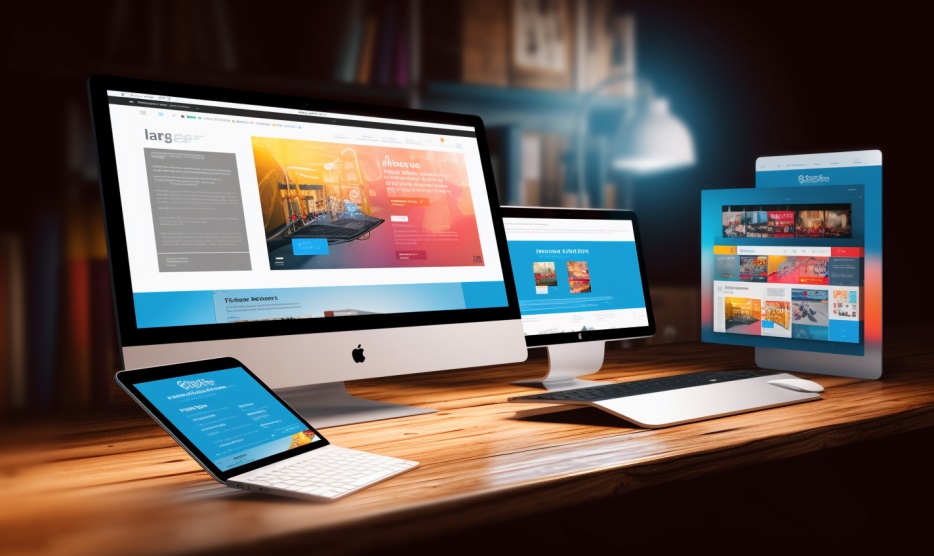Introduction: An Indispensable Duo
Search Engine Optimization (SEO) and web design may seem like two distinct facets of your digital strategy. However, the successful integration of these elements can create a powerful synergy, enhancing the online visibility and user experience of your website. This is an integral part of any comprehensive digital marketing plan.
The right combination of a visually appealing website and a well-executed SEO strategy can significantly boost your brand’s online presence. Both aspects should be taken into consideration right from the start, ensuring seamless integration for the best results.

The Role of Web Design in SEO
Web design isn’t just about aesthetic appeal—it’s a crucial component of effective SEO. Search engines like Google evaluate various elements of your website design, including its responsiveness, ease of navigation, and loading speed. Each of these elements plays a significant role in determining your website’s ranking in search results.
Hence, your web design strategy should always factor in SEO. A well-designed website that adheres to SEO guidelines can help improve your site’s visibility, attract more traffic, and boost user engagement.
User Experience and SEO: A Close Connection
User experience (UX) has become a critical SEO factor, with Google increasingly prioritizing websites that provide a seamless user experience. Elements like site speed, easy navigation, and mobile optimization are all essential in creating a positive UX, which can greatly impact your site’s SEO performance.
Optimizing your website for better user experience can reduce bounce rates, increase the time users spend on your site, and encourage them to engage more with your content—all of which can significantly improve your SEO performance.
Mobile Optimization: A Must for Modern SEO
As more people use mobile devices to access the internet, mobile optimization has become crucial for SEO. A mobile-friendly design not only improves user experience but also impacts your search engine rankings.
Google’s mobile-first indexing means that the search engine primarily uses the mobile version of a site for indexing and ranking. Therefore, ensuring that your website design is responsive and functions seamlessly on mobile devices is integral to your SEO efforts.
Site Speed and SEO Performance
Site speed is another critical factor where SEO and web design intersect. Slow-loading pages can frustrate users, leading to higher bounce rates and negatively impacting your SEO performance. Therefore, your web design must incorporate techniques to enhance loading speed, such as optimizing image sizes, minimizing HTTP requests, and reducing server response times.
Investing in efficient web design that prioritizes speed can lead to higher user satisfaction, better engagement, and improved SEO rankings.
A Structured Approach to Web Design and SEO
Navigating the nuances of SEO and web design may seem daunting, but agencies like RiseOpp have developed strategies that tackle this challenge head-on. With our proprietary Heavy SEO methodology, we have mastered the art of integrating SEO with web design, ranking websites for a plethora of keywords, and ensuring a seamless user experience.
Built on a profound understanding of over 200 main algorithm factors of search engines, RiseOpp’s Heavy SEO and web design approach prioritizes both aesthetic appeal and functional excellence, resulting in websites that not only rank high but also engage users effectively.
The Power of Intuitive Navigation
Good navigation is a crucial aspect of web design that significantly impacts SEO. A well-structured website helps search engines index your site more efficiently and improves users’ ability to find and interact with your content.
Intuitive, easy-to-use navigation can enhance the user experience, encourage longer site visits, and increase the chances of conversion—all of which can contribute to your SEO success.
SEO-friendly Content Layout
How you present your content can also affect your SEO performance. A clean, organized layout makes it easier for visitors to consume your content and for search engines to crawl your site.
Furthermore, using headings correctly (H1, H2, H3, etc.) and strategically placing keywords in these headings can enhance your SEO. Remember, your content should not only be keyword-optimized but also easy to read to keep users engaged.
Incorporating Multimedia Elements
Multimedia elements like images, videos, infographics, and interactive content can improve user engagement and dwell time—two critical factors for SEO. However, these elements should be optimized correctly to ensure they don’t hamper your site’s loading speed.
Image optimization, for example, involves compressing the files and using appropriate alt tags, making your site more accessible and improving its SEO performance.
The Role of Color in SEO and Web Design
The color scheme of your website plays an indirect role in your SEO performance. While it may not affect SEO directly, it significantly influences user behavior and perceptions.
A well-thought-out color scheme can create a positive user experience, impacting how visitors perceive your brand and interact with your site. This, in turn, can lead to lower bounce rates and longer dwell times, indirectly boosting your SEO efforts.
The Future of SEO and Web Design
As search engines continue to evolve, the integration of SEO and web design will become even more important. Emerging technologies like AI, VR, and voice search will bring new dimensions to both SEO and web design, making their interplay critical to a website’s success.
Staying on top of these trends and continuously updating your strategies can ensure that your website stays relevant, user-friendly, and visible in search results.

A Harmonious Blend of SEO and Web Design
The interplay between SEO and web design is a testament to the fact that a holistic approach is the key to a successful digital strategy. As the digital landscape continues to evolve, businesses must adapt by seamlessly integrating these elements, optimizing their online presence and user experience.
By striking a balance between SEO and web design, businesses can create a powerful synergy that maximizes their website’s potential, attracting, engaging, and converting visitors like never before.
Comments are closed